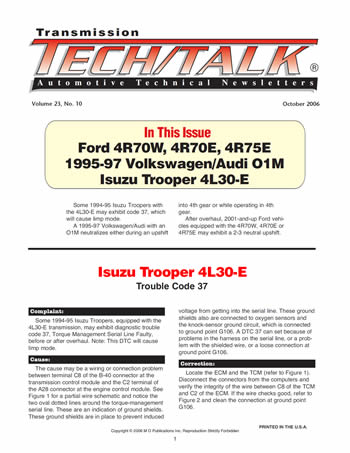



Some 1994-95 Isuzu Troopers, equipped with the 4L30-E transmission, may exhibit diagnostic trouble code 37, Torque Management Serial Line Faulty, before or after overhaul. Note: This DTC will cause limp mode.

The cause may be a wiring or connection problem between terminal C8 of the B-40 connector at the transmission control module and the C2 terminal of the A28 connector at the engine control module. See Figure 1 for a partial wire schematic and notice the two oval dotted lines around the torque-management serial line. These are an indication of ground shields. These ground shields are in place to prevent induced voltage from getting into the serial line. These ground shields also are connected to oxygen sensors and the knock-sensor ground circuit, which is connected to ground point G106. A DTC 37 can set because of problems in the harness on the serial line, or a problem with the shielded wire, or a loose connection at ground point G106.
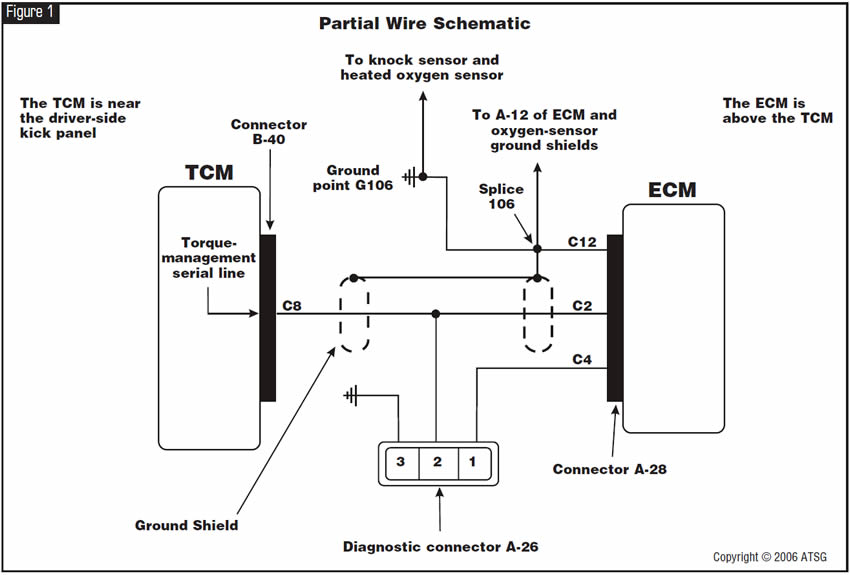

Locate the ECM and the TCM (refer to Figure 1). Disconnect the connectors from the computers and verify the integrity of the wire between C8 of the TCM and C2 of the ECM. If the wire checks good, refer to Figure 2 and clean the connection at ground point G106.
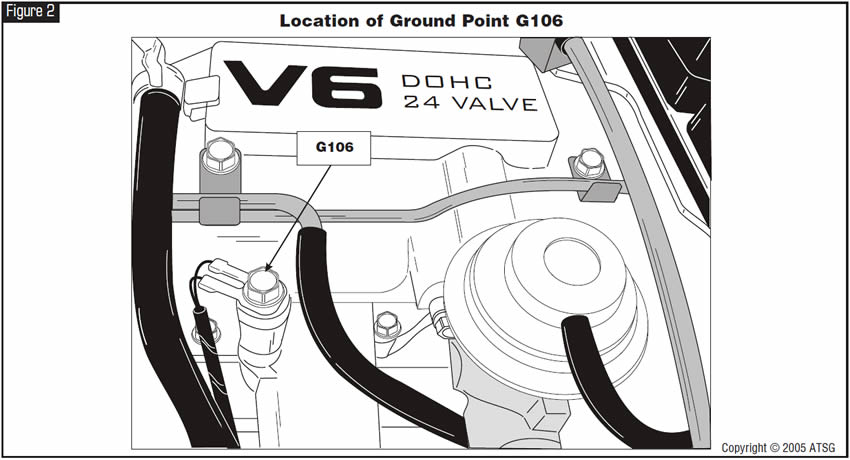




A Volkswagen/Audi vehicle with an O1M transaxle exhibits a neutralizing condition either during an upshift into 4th gear or while operating in 4th gear.

One cause may be a leak at solenoid valve EV7, or a cracked or leaking bore plug for the 2-3 timing valve. In the 1995-97 Volkswagen/Audi O1M transaxle, solenoid valve EV7 is energized in both 3rd and 4th gears. The function of solenoid valve EV7 is to control the spring side of the 2-3 timing valve (refer to Figure 3). This illustration shows an intact hydraulic circuit without a leak. Solenoid-regulator-valve pressure is fed to solenoid valve EV7. The solenoid is energized and closed by an electrical signal causing pressure to build, which is then sent to the spring side of the 2-3 timing valve; this assists the spring in keeping the 2-3 timing valve in a closed position. Line pressure from the K3/manual-1 locking valve is fed to solenoid valve EV2, which is also energized and closed by an electrical signal, allowing line pressure to pass through the B2 shift valve and be directed to the 2-3 timing valve. Once line pressure passes through the 2-3 timing valve, it flows to the B2 regulator valve and on to apply the B2 brake.
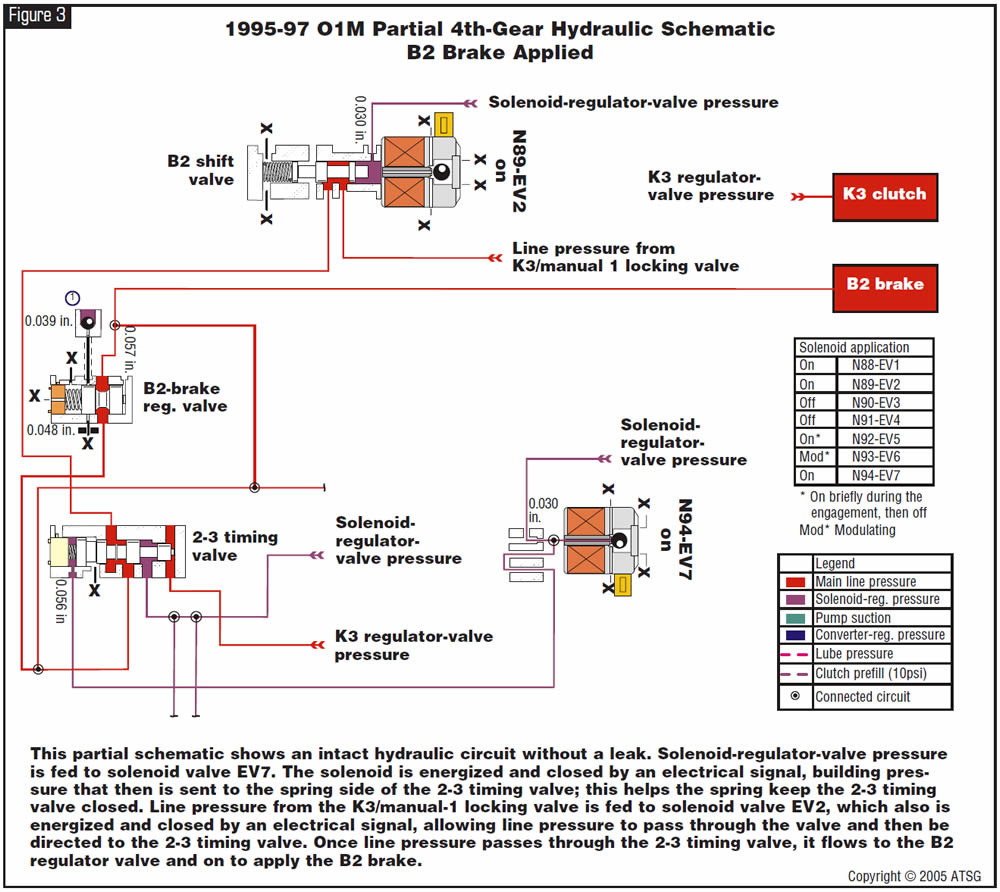
Figure 4 depicts a hydraulic circuit that is leaking at either solenoid valve EV7 or the 2-3 timing-valve bore plug. If the solenoid is open and can’t close, or the bore plug is leaking, oil pressure at the spring side of the 2-3 timing valve won’t build up and stop the valve from stroking. If this happens, line pressure from solenoid valve EV2 won’t be able to pass through the valve and apply the B2 brake. The result will be neutralizing, because only the K3 clutch will be applied.
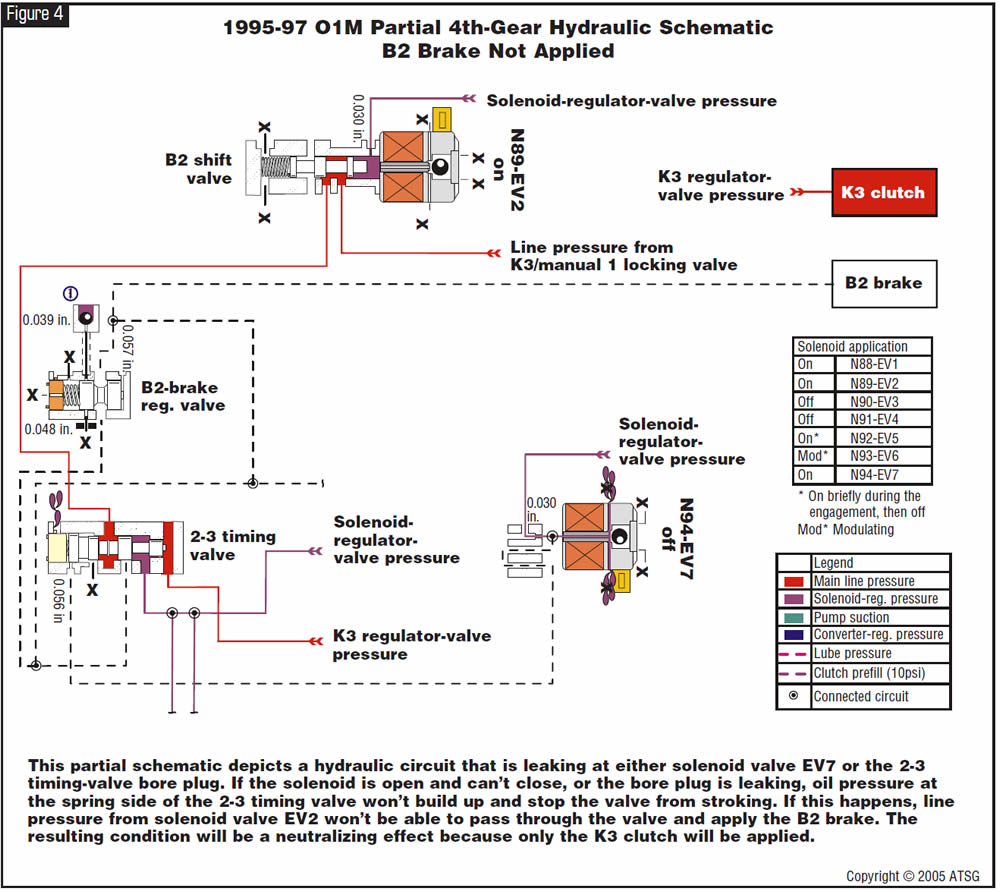

This correction is very simple and can be done with-out even removing the valve body. Remove the oil pan and locate the 2-3 timing valve (refer to Figure 5). Twist the plastic bore plug and remove from the valve body, then remove the spring. Make sure the valve isn’t sticking and is completely seated in the back of the bore. Find an AXODE checkball and insert it into the spring seat of the valve, making sure it is inserted all the way. Next, cut about 1.5 coils off the spring, then reinstall the spring and bore plug into the valve body. Put the pan back on, refill with fluid and you’re finished.





2001-and-up Ford vehicles equipped with the 4R70W, 4R70E or 4R75E may exhibit a 2-3 neutral upshift after overhaul.

The cause may be that a previous-design 2/3-accumulator retainer was used, or the retainer was assembled upside down when installed into the case. Note: 2001-and-up valve-body assemblies, as shown in Figure 6, do not use the small plate that is over the 2/3-accumulator retainer.
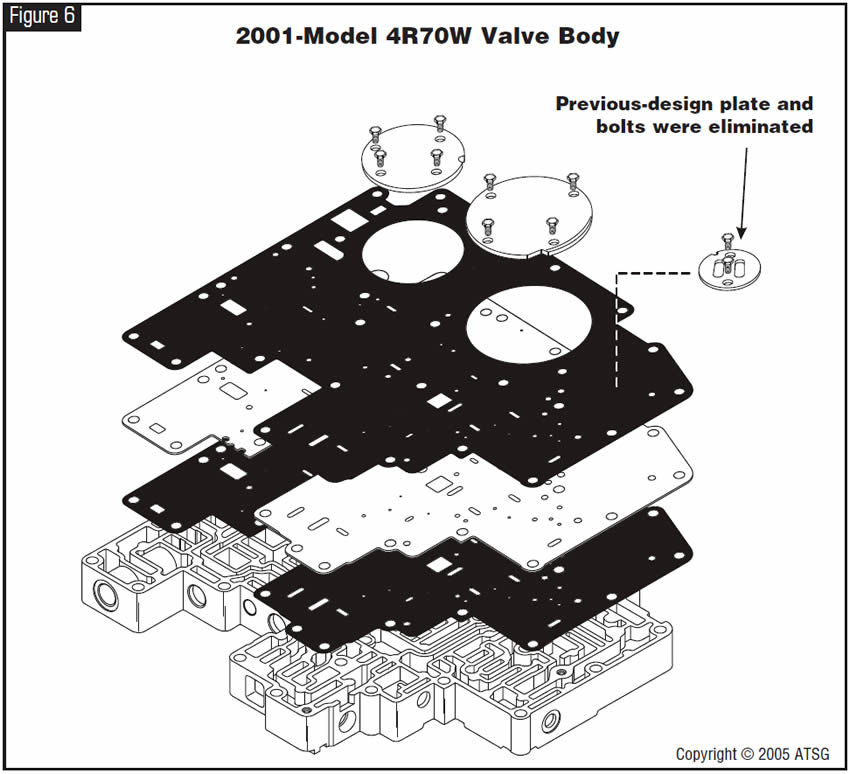
This made necessary a taller 2/3-accumulator retainer as shown in Figure 7. When an incorrect 2/3-accumulator retainer is used or if the retainer is upside down, the 2/3-accumulator piston may pop out of its bore, dumping direct-clutch pressure to an exhaust.
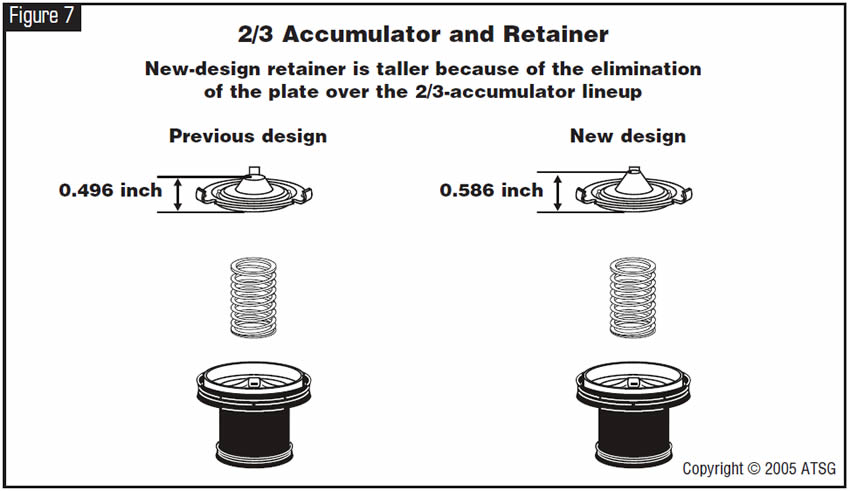
See Figure 8 for a cutaway of correct and incorrect assembly.


Refer to Figure 9 for the location and correct installation of the 2/3-accumulator retainer, piston and spring.
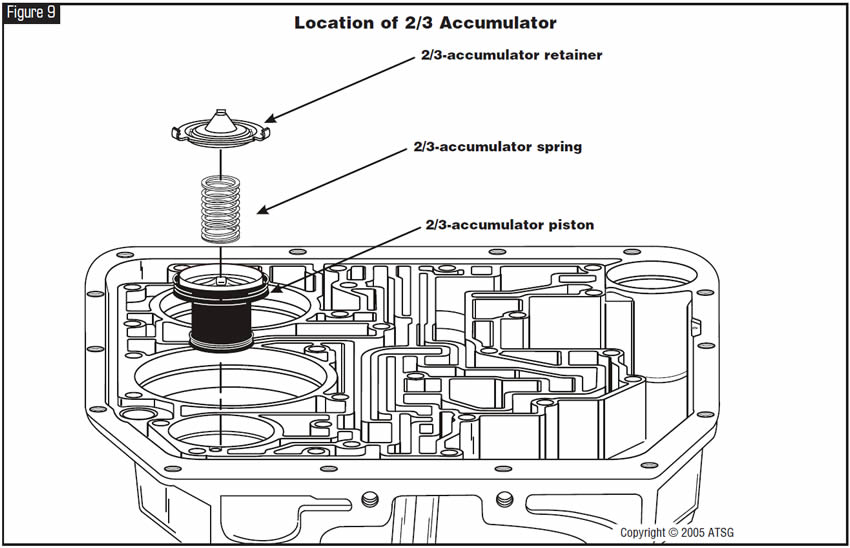


October 2006 Issue
Volume 23, No. 10
- Isuzu Trooper 4L30-E: Trouble Code 37
- 1995-97 Volkswagen/Audi O1M Transaxle: Neutralizes Going into 4th Gear or While in 4th
- Ford 4R70W, 4R70E, 4R75E: 2-3 Neutral Upshift

